Tired of hearing how “flat and boring”, the Great Plains are, I decided to head out to Montana’s Island ranges. And of the island ranges, the Bearpaws are one of the most distinct. These rolling hills don’t reach up to the soaring glacier-carved heights of the Rockies, and as a result there is no distinct line between prairie and peak. Looking around at the native grasses and bird life it doesn’t feel like a completely separate environment to the rest of the Great Plains. It’s just amplified somewhat.
Mount Otis is definitely not the highest point in the Bearpaws – that title goes to Mount Baldy. (Another peak on my to-do list). Mount Otis is a short easy hike that won’t leave your legs burning the rest of the day, but will offer you some gorgeous views from the top. The trail’s grade is consistently easy, slowly winding it’s way through the grasses and flowers to the peak. There are even a couple benches in case you feel like taking a break.
Continue reading this blog post for everything you need to know to experience the Mount Otis hike in the Bearspaw Mountains for yourself, including distance, elevation gain, how to get there, the best time to visit, and lots of photos of my experience.
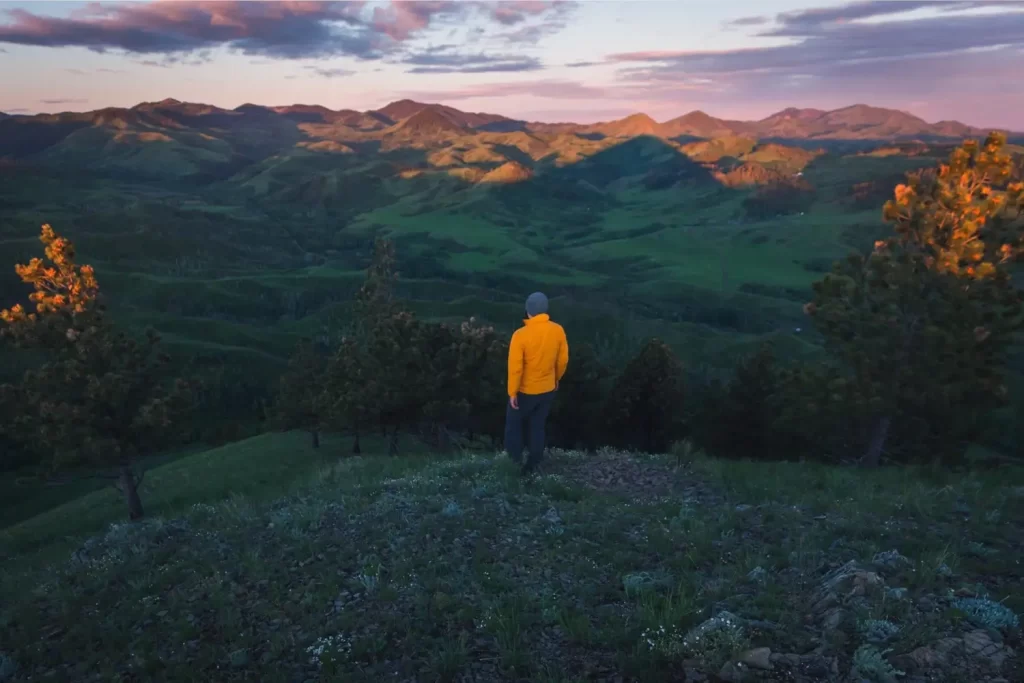
When hiking it’s important to avoid harmful practices such as disturbing plants or rock-stacking, or removing any natural object from flowers to rocks, as it’s important to leave the environment as natural as possible for the animals and for fellow hikers to enjoy in perpetuity. As many flowers as there are, there are few enough that if we all took one, then there wouldn’t be any left. Take only photos, leave only footprints.
If you haven’t heard of Leave No Trace principles, they’re also really essential to read up on before heading anywhere into the outdoors in general. Following these important principles basically means doing your best to leave beautiful places like Mount Otis as good (if not better) than you found them, both for their preservation and for the enjoyment of other visitors.
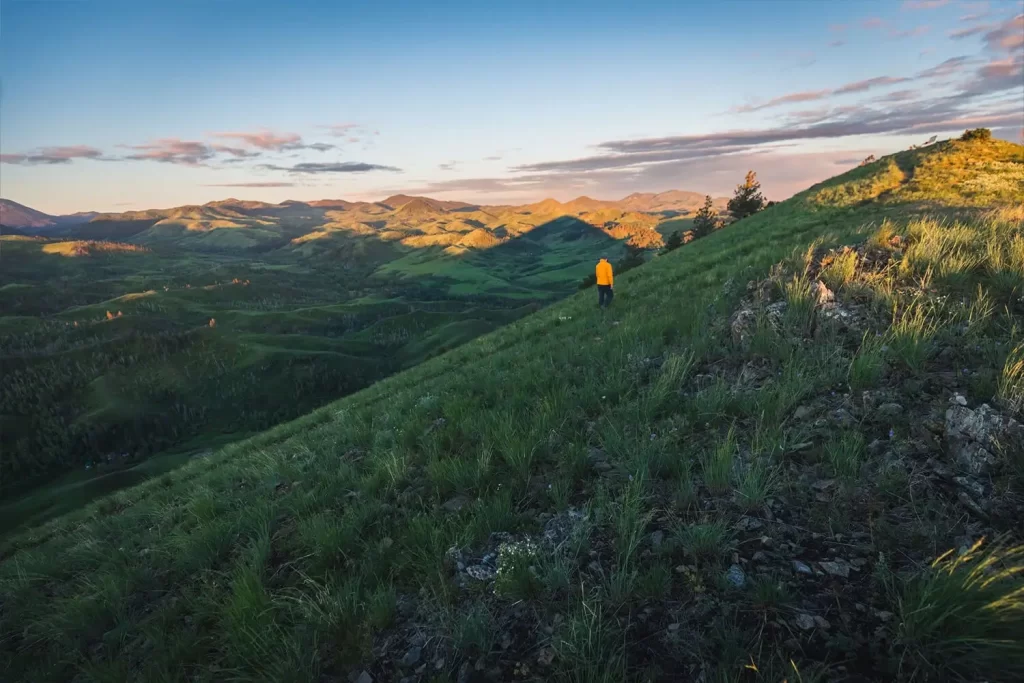
Mount Otis Round Trip Details
Distance: 1.9 MI / 3.1 KM
Elevation Gain: 705 FT / 215 M
Hiking Time: 50 MINS
Hiking & Safety Tips
- Research current trail conditions and make sure you are well-informed about the route before you leave, and assess if it is within your capability. Be aware of what time it gets dark and check the weather forecast. Make sure to tell someone where you’re going and when you expect to return. Every year as more and more people try hiking for the first time, the number of rescues goes up. Being prepared is the best defense.
- Pack everything you need for a successful hike, including enough water and energy-rich snacks. Remember to pack out everything you pack in though – don’t expect to find a convenient garbage can halfway up the trail. Bring appropriate layers (remember you’ll warm up once you start hiking) and sun protection. Hiking poles may be helpful but are not required. In addition to not leaving any garbage on the trail yourself, I highly recommend bringing a garbage bag and collecting any trash that you do see on thetrail. You’re guaranteed to make the hike up Mount Otis a more enjoyable experience for the next person.
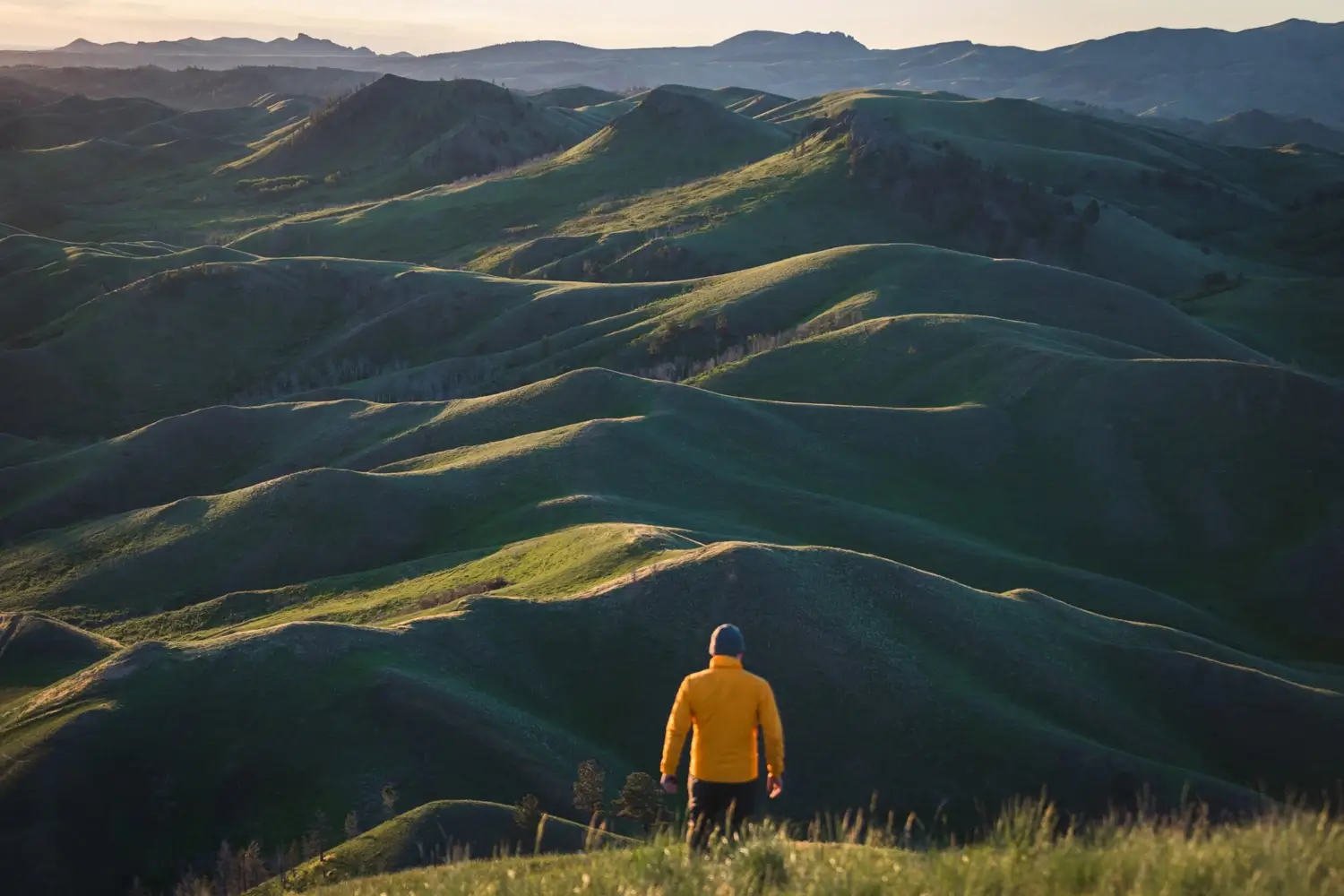
How to Get to Mount Otis Trailhead
The Mount Otis parking lot is located in Beaver Creek Park, two hours from Great Falls or four hours from Lethbridge. The little pullout for the trailhead is located just under 1 km down Mooney Creek Road. The road is rough and likely impassable in wet conditions. Clearance would be helpful but we drove up it in the Kia Soul without any problems.
Click here to open the exact trailhead location in Google Maps.
Hiking Mount Otis
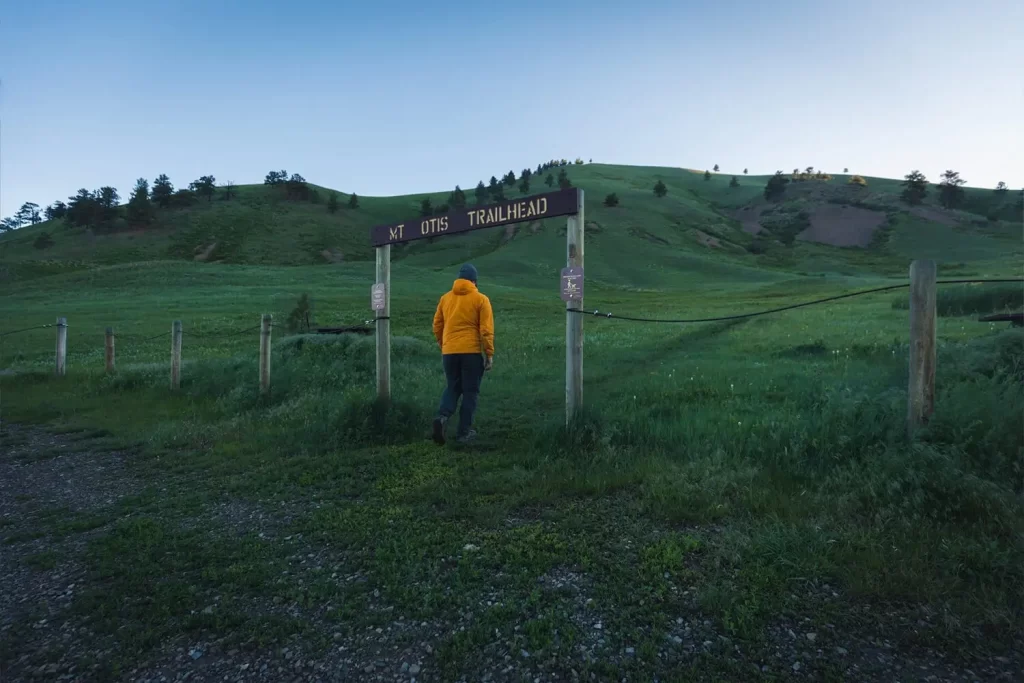
Mount Otis looking particularly unimpressive from below.
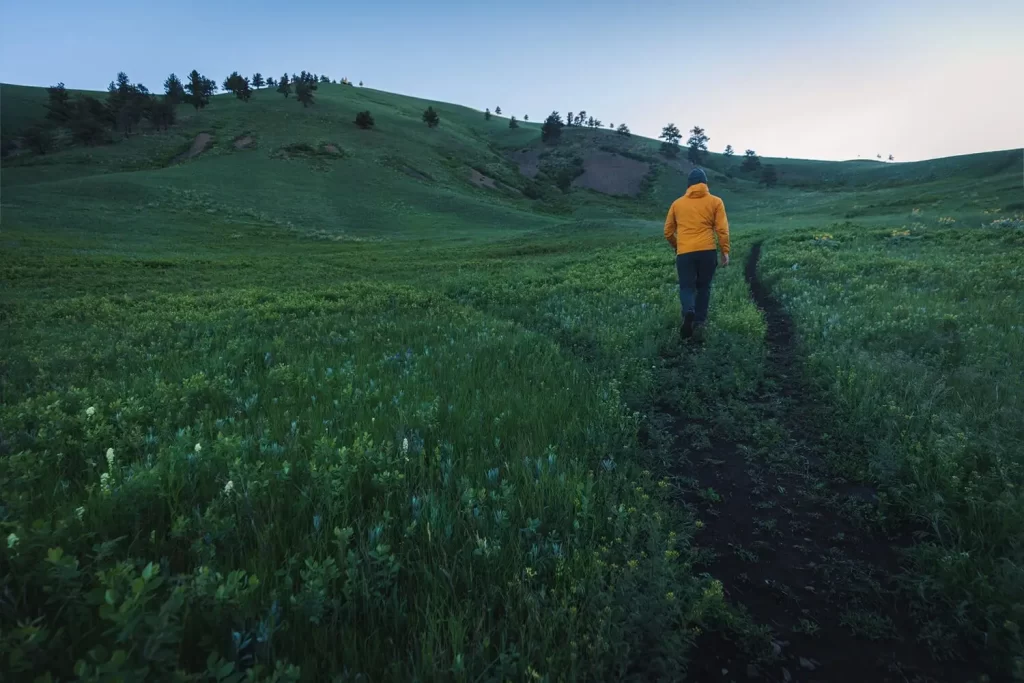
The trail divides in two here but reunites soon after so it doesn’t really matter. Both make their way up to the ridge at far right before switchbacking and crossing through the scree patches visible on the hillside.
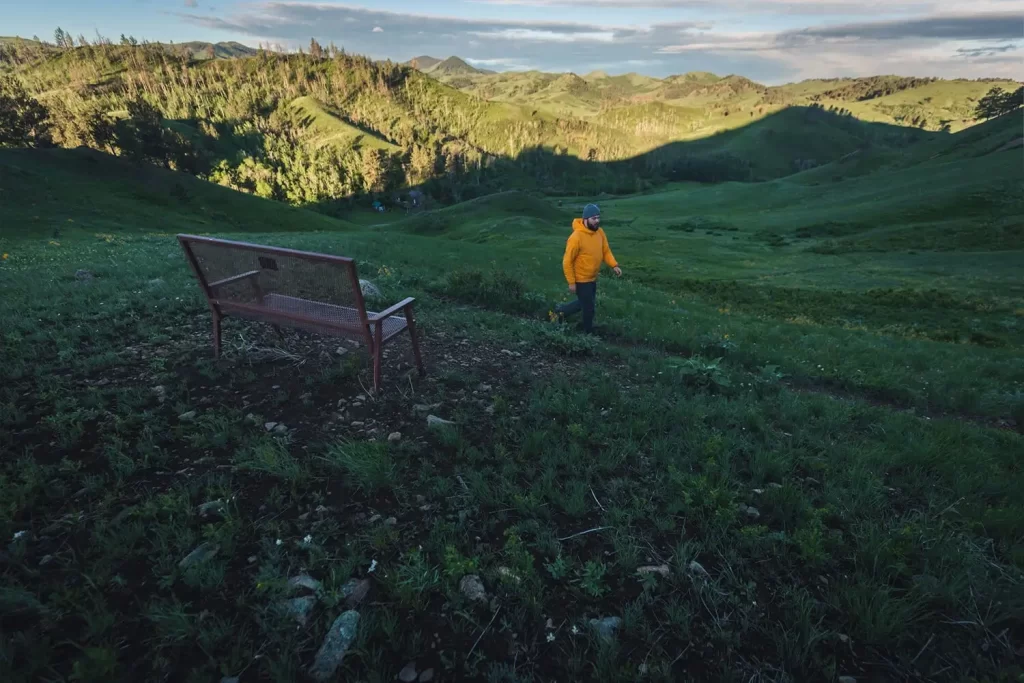
On top of the ridge.
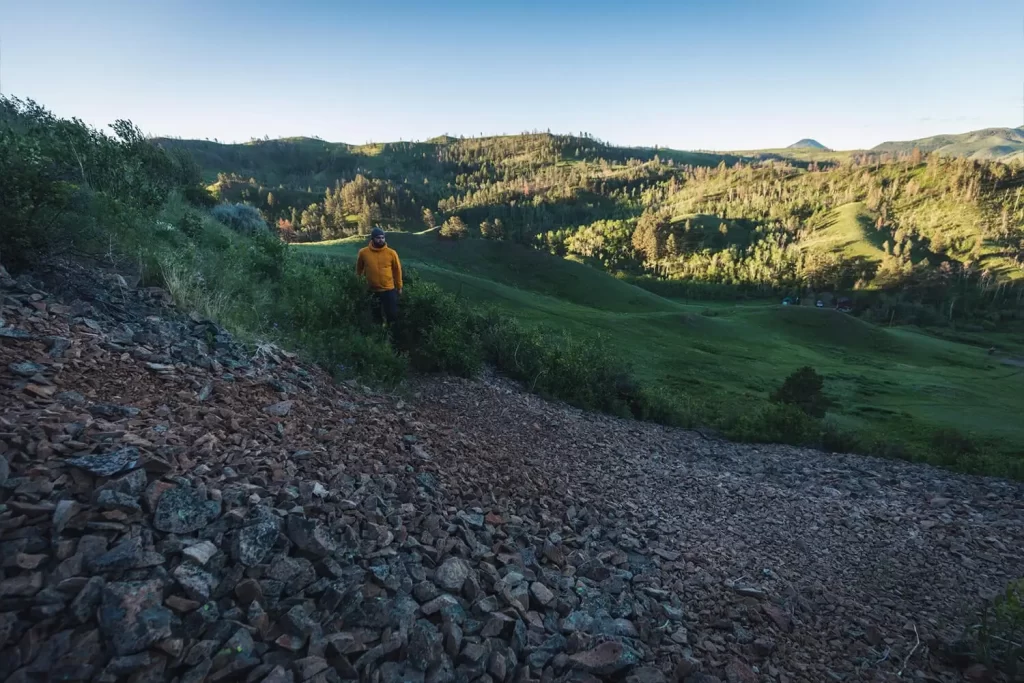
Crossing through one of the aforementioned scree patches.
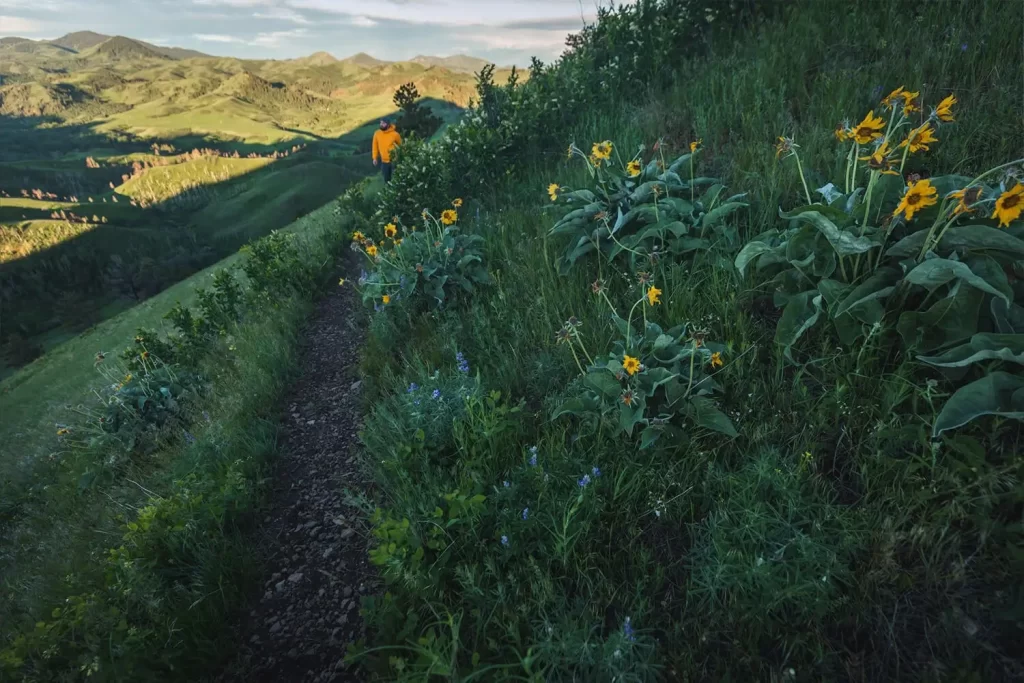
The whole mountain is covered in patches of arrowhead balsamroot. Unfortunately most were just past their prime when I was there mid-June.

The peak visible now – with a bench on it too!
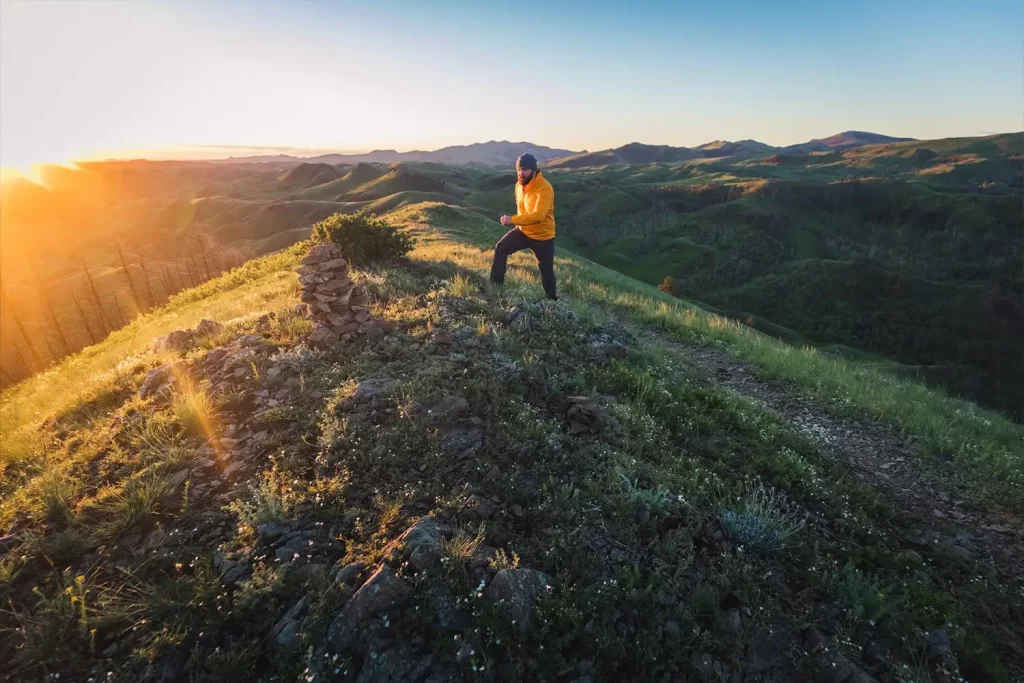
Can’t rest until I make it to the summit cairn of course.
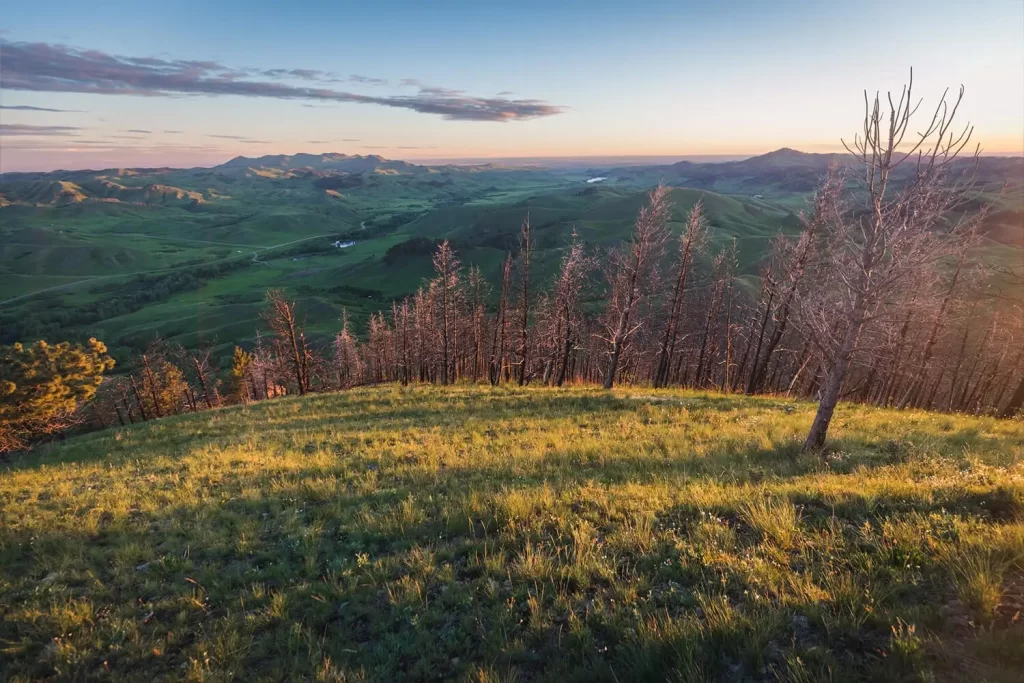
Views to the North. The hazy Sweetgrass Hills just faintly visible on the very distant horizon at far left.
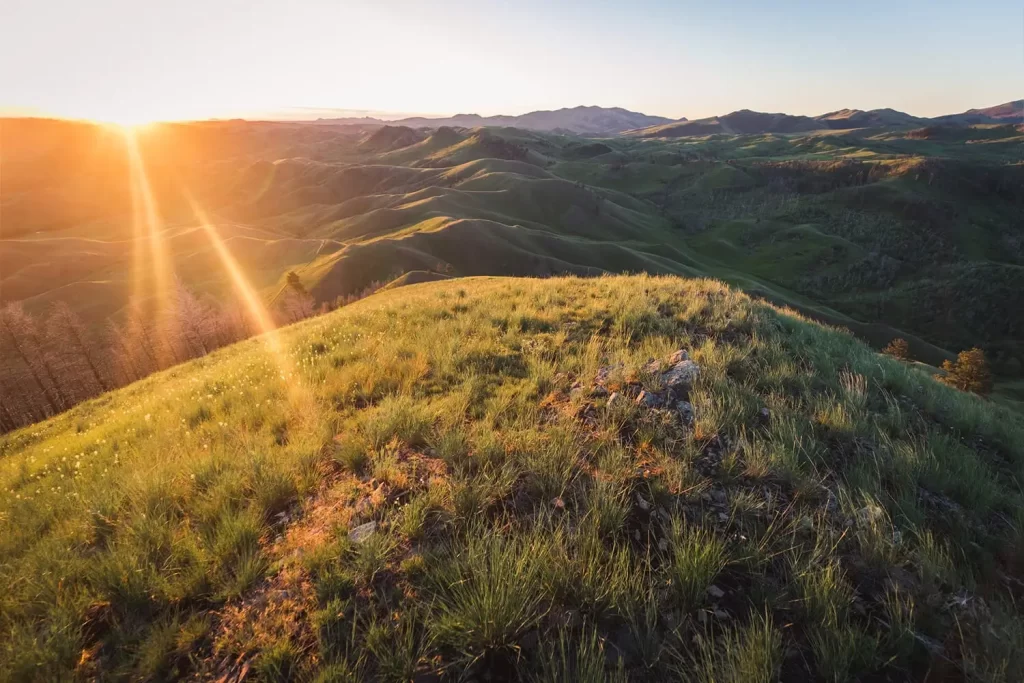
Views to the east.
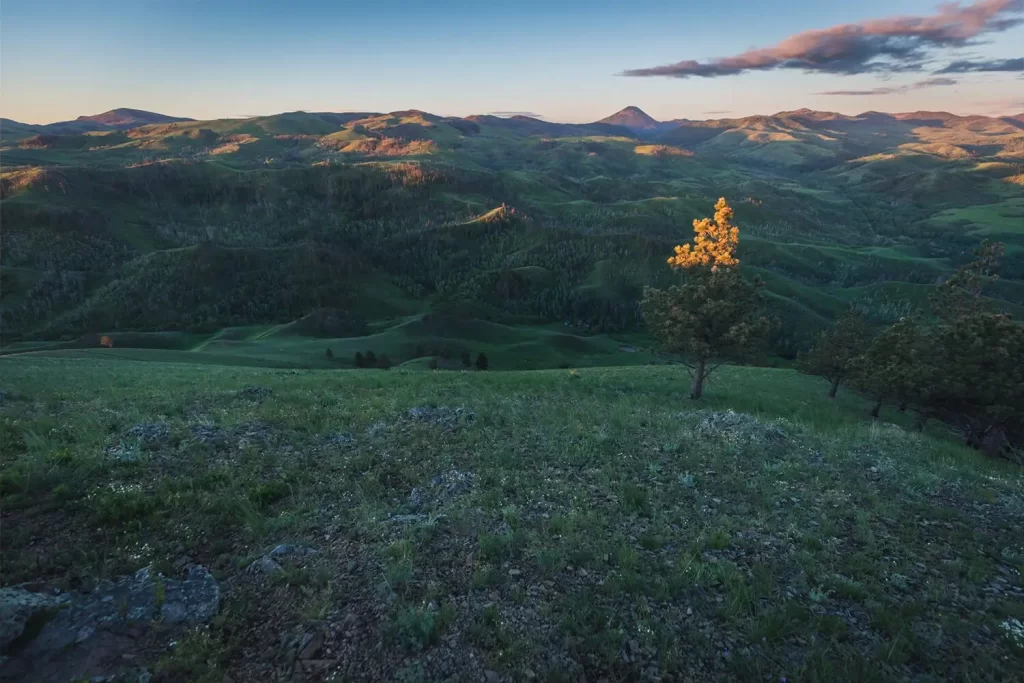
Views to the South. Mount Baldy stands out in the distance.
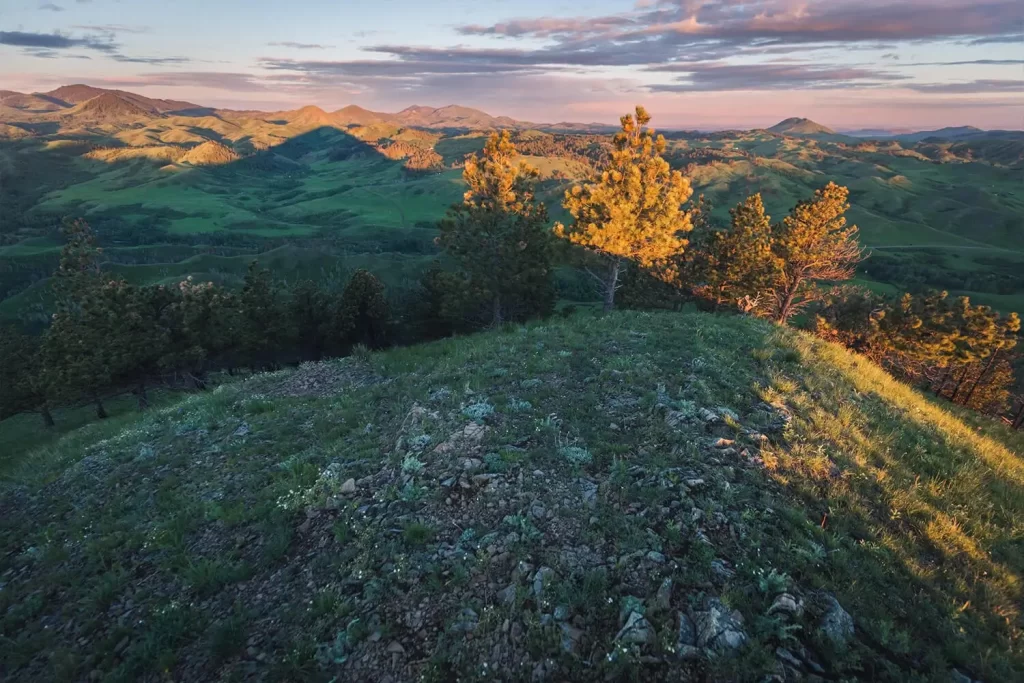
Views to the west.
Recommended Hiking Gear



Water is a must whenever I’m hiking, especially if the sun is going to be out. My favourite water filter I’ve used is the Katadyn BeFree 0.6L, which unlike other water filters I’ve used packs up really small and lightweight. For hikes where I know there won’t be any readily available water sources along the way, I make sure to bring my own. The Hydrapak Stow 1L bottle is my go-to, for the same reason that it’s made of a soft plastic that folds up and doesn’t take up any more extra space than necessary in my pack. Finally, Aquatabs are another great option for purifying water, with one tablet being suitable for one litre of water. I previously used the Grayl water filter while travelling internationally, and though I found its hard body more convenient for day to day use and easier to drink from, it has a little too much bulk for my fast-and-light style of hiking.



The secret to all my photos of gorgeous sunset and sunrise mountaintop views? A lot of hiking in the dark. And let me speak from personal experience when I say that the last thing that you want to happen when hiking is to be caught in the dark without a headlamp. I used the Black Diamond Spot 400 for years and it worked great – until I lost it on top of a mountain somewhere. The only downside to it was having to worry about the batteries dying, though there’s also a slightly more expensive version that has a rechargeable battery. Nowadays I’m using the Petzl Actik Core, which is a bit pricier than the more budget-friendly Black Diamond, but is also brighter, more comfortable (in my opinion), and has a hybrid power system that is rechargeable but can also take AAA batteries if needed.
You won’t see me using trekking poles on shorter hikes often – but on long hikes and backpacking trips, as well as certain scrambles, they are an absolute lifesaver. I’ve invested in a high quality ultra-lightweight pair of MSR DynaLock Ascent carbon poles which, while pricey, I don’t regret one bit. If you’re not entirely sure how much use you’re going to get out of a pair of trekking poles, the best budget-friendly option would be the Trekology Trek Z 2.0. Amazon does sell a lot of cheaper Made in China-style trekking poles for cheaper, but these usually are much much heavier and not worth buying.
All the best and most long-lasting cables and power banks I’ve ever owned have been Anker. I once had a phone cable from them that lasted me over three years of daily use! That’s why I keep an Anker PowerCore Essential 20K power bank on me. Like many people I use my phone for a lot of stuff when hiking (checking in with family, using online maps, taking photos, flying my drone) so I like to be prepared for that low battery warning by having a backup power source on me just in case.



The only socks I ever buy for myself are from Darn Tough, and I almost always make sure to wear them when hiking. After years of having no problems only wearing these comfortable and rugged socks for hikes, I accidentally wore a pair of no-name socks on a hike last year and ended up with blisters on both feet. Safe to say I’m back to sticking with the Darn Tough. And the best part? They have a lifetime guarantee, meaning that if they ever wear out you can send them back for a brand new pair. For hiking footwear I go between a pair of lightweight approach shoes for quick and dirty mountain ascents or anything involving scrambling and more heavy-duty boots for longer treks. I’ve worn a couple different versions of the lightweight but super durable Arc’teryx Konseal FL 2 approach shoes for a few years now and am very impressed with the durability. I also really like the thick toecap that keeps me protected every time I stumble into a root or large rock. For longer, tougher, or muddier treks I rely on my LOWA Camino EVO GTX, which I find insanely comfortable and made of very high quality.



I wear my Ar’teryx Gamma Lightweight Pants on every single hike I go on, and on many days when I’m not hiking. After several years of abuse they are still holding together extraordinarily well, with only a few small holes from where I’ve fallen down and some slight stains from being repeatedly coated with mud. They’re lightweight, breathable, and super comfortable. For lightweight and breathable hiking tops I’m a big fan of both the Patagonia Capilene Shirt and the MEC Core Shirt. My Arc’teryx Squamish Hoody shows up in a lot of my photos. It’s super lightweight and packable, and does a great job of cutting the wind while also being pretty breathable. I also have an Arc’teryx Atom Hoody and Arc’teryx Beta LT that I pull out for cooler or wetter conditions.
I hope you enjoyed this guide to hiking Mount Otis in the Bearspaw Mountains! Feel free to leave any questions in the comment section below or to contact me directly via social media.
